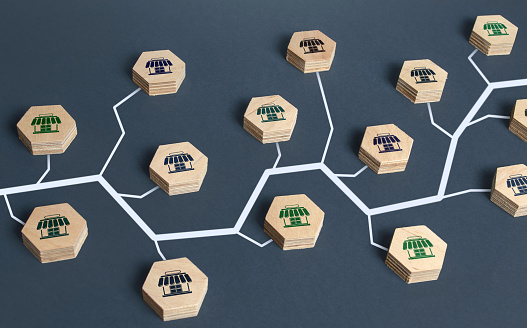Startups require many decisions. Which business model should I choose?
Choosing how to sell your product, who to sell to, and how to make money is difficult.
However, your business model can make or break your company.
This blog will explain business models and examples of successful companies using them. Dig in!
What Is a Business Model?
It’s mostly a conceptual structure that defines the business’s products, services, target audience, and goals, and it describes how a company creates, delivers, and gains value for customers and itself.
Peter Drucker, the father of management, once said that the business model supposes to answer the following:
What value can you create for the customer?
Who is your customer?
And how can you create value at reasonable costs?
Business models have three main components:
- Designing and making the products.
- Selling to the right customer.
- How customers pay and how the company makes money.
Business models include customer interface, value network, and resources! Let’s examine some popular and successful models.
A complete list of the best ways to run a business
Bundling Model
This model bundles and sells multiple products. Grouping items increase your average order value by encouraging customers to buy more.
This model also eliminates dead stock. Customers will buy a slow-moving product bundled with a faster-selling one! Reduce inventory waste.
McDonald’s Happy Meals best illustrate bundling. McDonald’s sells burgers, fries, and drinks together, increasing sales.
iPod-iTunes is another example. Every iPod buyer must also use iTunes.

Dropshipping
Dropshipping is best for starting a business with low costs and no margins.
E-commerce businesses spend the most on inventory, right? In this model, you buy inventory later. Instead, please buy it from a third party and ship it to the customer.
No inventory means low startup costs. Because you won’t be holding unsellable items, financial loss is lower.
Suppliers also pick, pack, and ship products. This business model offers convenience, efficiency, and remote management.
How does this model make money? Profit is the difference between customer payment and supplier price.
This business model has low-profit margins (around 20%). Selling lots of products is necessary to make a profit.
Crowdsourcing
In crowdsourcing, the “crowd” is the business. Crowdsourcing data, open-source software, and crowdfunding are common.
Crowdsourcing data involves gathering global insights and using them to benefit the business.
Waze is a mobile GPS app. This app lets users report traffic jams, hazards, and more. Everyone can see this data!
Developers can modify and improve open-source software by accessing its source code. The result? Many people improve the software.
Finally, crowdfunding raises money from many people to fund a business or project. Investors may receive early product access.
Crowdsourcing improves efficiency, consumer engagement, cost, and knowledge.
Freemium
Freemium combines “free” and “premium.”
The Freemium Model offers a basic product for free. The product’s premium features require a subscription.
Nobody wants to buy something they don’t know will work. The freemium model lets consumers try a product and learn its benefits without buying it!
The freemium model assumes that customers who love the free version will pay. They attract premium customers regardless.
High-Touch/Low-Touch Model
Human interaction drives the high-touch model. That means the salesperson-customer relationship greatly affects company revenue!
High-touch companies rely solely on trust and credibility. Consulting firms, hair salons, etc., use this model.
In the low-touch model, selling a product or service requires little human assistance. Thus, a company doesn’t need a large sales team, reducing costs.
However, low-touch companies must improve technology and customer experience to reduce human interaction.
Direct-to-Consumer (DTC)
Direct-to-consumer means selling directly to customers. No wholesalers, intermediaries, or third-party retailers are involved.
DTC has grown rapidly as the multichannel retailer model has slowed. Warby Parker, Casper, Barkbox—all DTC brands.
DTC businesses can build a loyal customer base, increase customer lifetime value, and increase profitability by directly interacting with customers.
You can also gain valuable insights into consumer preferences and needs to improve your products.

Franchising
Franchises may be the most familiar business model. We encounter franchise businesses daily.
Franchise model: The “franchisee” buys and reproduces the “franchisor’s” brand and trademark.
A franchisee sells the franchisor’s products and services under its brand and trademark. Franchisees must pay the franchisor a percentage of profits.
Starbucks, Domino’s, Subway, McDonald’s, Dunkin Donuts, Hertz, and the UPS Store are franchises.

Aggregator Business Model
An aggregator firm visits a service provider, proposes a partnership, and promises more customers. The service provider signs a contract, and the aggregator sells under its brand. Aggregator business model in a nutshell.
Customers buy through the aggregator, partners get customers as promised, and the aggregator gets the commission. A win-win!
The aggregator maintains quality and pricing despite offering products from different partner providers. Why? Because the aggregator is a brand.
Offering providers never work for aggregators and always own their products/services.
Uber, the taxi app, follows this model. It provides drivers with customers for a commission.
Affiliate Marketing
Affiliate marketing involves selling a company’s products and earning a commission. Blogs, videos, social media, etc., can promote the product.
Affiliate marketing revolves around selling a company’s goods or services. An example will help.
Have a website. Your website can display third-party products. You get a commission when a buyer clicks on the product link and buys it.
Amazon dominates affiliate marketing! The Amazon Associate program offers a 10% commission.
The End
Your business may need a mix of these business models.
Yes, you can sell your goods and services in multiple ways. You can sell subscriptions and consulting!
A clear goal makes choosing a business model easier. Simply put, nail the “what” and choose the best “how”.




